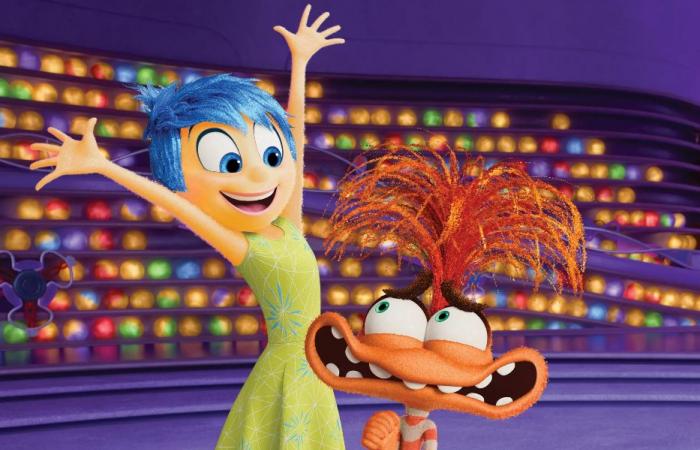undefined – undefined
Last time their parents had accompanied them, now they came to the cinema on their own. Not exactly solo, okay. They are fifteen years old or so, it is natural for them to move in packs. First loves, last naiveties, popcorn galore. There are cases in which, even at the cinema, it is the audience who puts on the show and yes, the arrival in theaters of Inside Out 2 it is one of these cases. More than the previews reserved for the press, it is the screenings in multiplexes that reveal the pulse of the situation, preferably in suburban or provincial locations. Here you find children, you find families, you find adults (unsuspected in number and type) who wouldn’t give up a Pixar film for anything in the world. More than anything, you find them, Riley’s peers, the true protagonist of this saga sensationally played between the desire for unawareness and the desire for maturation. Funny, there’s no arguing. It’s very informative, as a well-told story should be.
The appeal to generational complicity is not new in an absolute sense. Even before the market was invaded by VHS, DVD and, finally, view on demand, the rule required that Disney classics be rescheduled every seven years. It was a mathematically calculated interval, according to a chessboard of combinations for which the little girl who had become a mother took her daughter to see Cinderella and the father who became a grandfather took his grandchildren to see Lady and the Tramp. The tactics may be outdated, but the strategy has remained unchanged. In a historical moment in which the enjoyment of live cinema is continually questioned, one of the few elements of appeal is the combination of curiosity and nostalgia. And Nostalgia is, precisely, one of the emotions that are starting to emerge Inside Out 2. She presents herself with the harmless appearance of an old lady busy with tea, but just give her time and you will realize that she should not be underestimated.
At this point, it’s better to pick up the plot threads. The first film in the series, Inside Out, was released in 2015, at a respectful distance from what should be considered the great Pixar trilogy of the noughties. Three masterpieces in quick succession: Ratatouille in 2007, WALL-E in 2008, Up in 2009. Meanwhile the saga of Toy Story and we tried to strengthen the reputation of other microcosms of Pixar’s imagination, such as that of Monsters & Co., in many respects the closest to the invention on which it is based Inside Out: on the one hand the night terrors of childhood, on the other the mechanisms of pre-adolescence. What happens in Inside Out, in fact, happens in the mind of Riley, who in the inaugural film is eleven years old, has a passion for ice hockey and is about to move from Minnesota to San Francisco, California. Ordinary administration, if only for the skill with which the screenwriters (among whom Pete Docter, director of the feature film together with Ronnie del Carmen, stood out) managed to revitalize the ancient metaphor of the charioteer, contaminating it with the demands of behavioral psychology. Human intelligence, claims Plato in Phaedrus, is similar to a chariot pulled by two horses. The white one points to the spiritual world, the black one to the material world. The charioteer’s job is to control them so that they proceed together.
In Inside Out, instead of reins and harnesses, there is an electronic console on which the different emotions follow one another. Joy usually has the upper hand, but Sadness also wants its share, while Anger is unpredictable, Fear is incorrigible and Disgust is insatiable. Time and time again, Riley gives in to one or the other, until Joy restores balance. Now, if coordinating five emotions together can be a feat, imagine what can happen when, at the age of thirteen and with the related unleashing of puberty, Envy with his whims, Embarrassment with his cumbersome size, the very snobbish Ennui – which would actually be Boredom, but in French it is more chic – and the irrepressible Anxiety. It is up to the latter, in particular, to question the role of Gioia, who with a real coup she is overthrown and exiled together with the other infantile emotions. Having remained master of the field, Ansia does everything to instill in Riley a desire for success which finds an outlet in her favorite sport and, for a change, leads her not to look anyone in the face, not even those who until yesterday were her best friends. .
Directed by Kelsey Mann from a screenplay by Meg LeFauve, Inside Out 2 it is undoubtedly Ansia’s film, which in the Italian edition speaks with the voice of Pilar Fogliati, the most famous in a team of voice actors who deserve to be quoted in full. It is, more generally, a film about complexity. In the opening scenes Riley can still rely on the “sense of self” that she has built up over the years and which conveys the belief that she is “a good person”. Too bad this isn’t enough for Ansia. From challenge to challenge, Riley convinces herself that she isn’t up to her standards and deludes herself into believing that she can assert herself by overcoming obstacles that she poses for herself. In reality – and this is the poetic intuition of the film – both sensations are true. Like any other human being, Riley is inadequate and kind, she contradicts herself because life is contradictory and, in the end, she saves herself not by getting the better of herself, but by surrendering to Joy. Nine years ago the boys and girls were watching Inside Out they might not even understand it. The important thing is that the girls and boys who are watching now understand it Inside Out 2.






